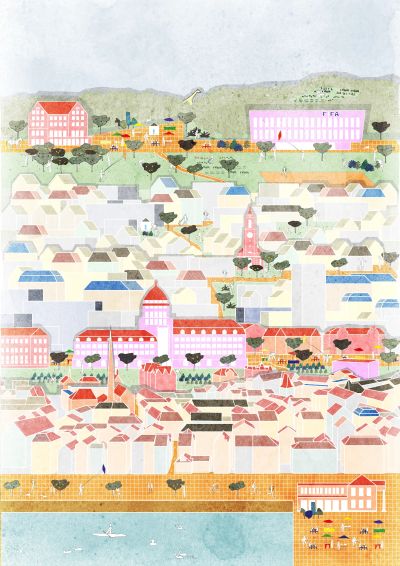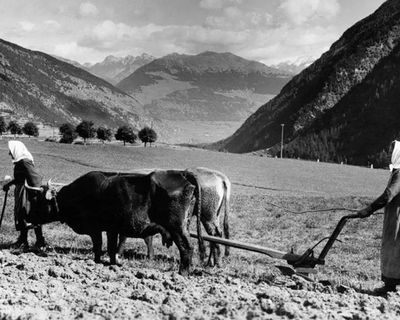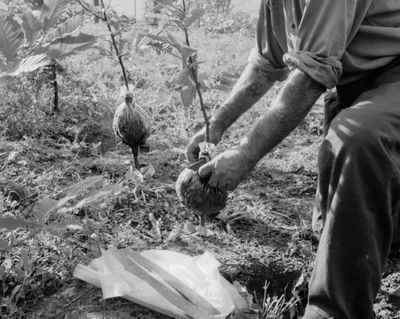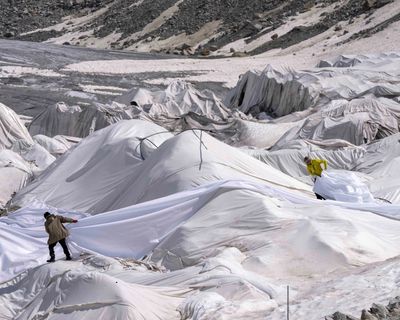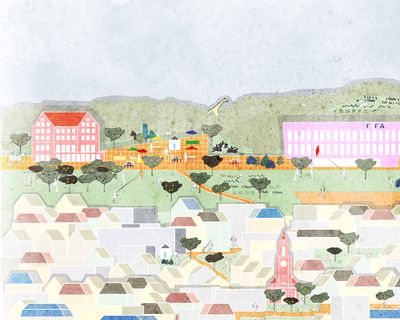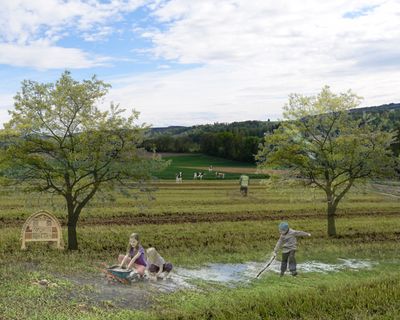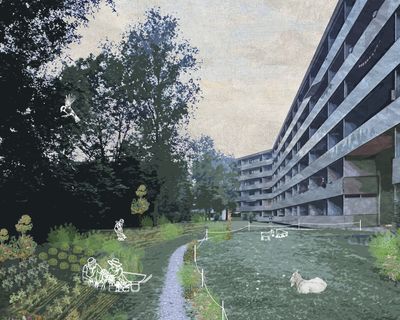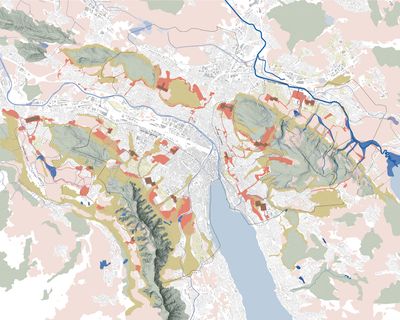Urban AgroecologyFor the Zürich Metropolitan Core
Zurich Hillsides
Zurich’s hills are distinctive landscape features, framing the city and performing vital cultural and ecological roles. They were formed as the Rhein-Linth-glacier retreated around 17000 years ago and carved a valley out of the molasse bedrock which became Lake Zürich, while the moraine glacier walls became the surrounding hills; Uetliberg, Zürichberg and Adlisberg. The hills served as protected settlement sites; the top of Uetliberg from at least 4000 BC., then becoming one of the most important Iron Age fortifications in Switzerland. The significance of these hills has increased through each phase of history, with pathways, farms, fortifications, and water infrastructure all contributing to their value as cultural landscapes. The city of Zurich iself developed at the tip of the lake, encircling it. Constrained by the flanking hillsides that are protected under different landscape categories, Zurich is extending across the drained valleys to the north. Within the city area, 10% of the land is used for agriculture.
The lake and hills steer the local water cycle, promote air exchange and cool the surroundings. Temperatures have already increased by at least 2° in Zurich over the past 155 years and 20% of the city is overheated on summer nights. Increased rainfall is predicted as well as higher temperatures, and Zurich has initiated an ambitious programme to become climate-neutral with zero greenhouse gas emissions by 2040. The Food Strategy is an important part of the plan for a climate-neutral city within the overall Environmental Strategy, as food accounts for one-third of the environmental impact and 20 % of the greenhouse gas emissions of the goods we consume.
Inner and Outer Edges
Our project takes the existing patterns of urban agriculture around Zurich’s hillsides and tests the hypothesis of developing a new zone of agroecology there. As well as the site for an intermediate vertical zone between forest and city, Zurich’s hills also mediate between the inner, urban side of the metropolitan region, and the outer side where agriculture has a long tradition, but is now home to a differentiated population made up of highly mobile commuters, both industrial and experimental farmers and young families seeking affordable housing. The hillside’s inside edges are characterised by very specific uses, combined within the Erholungszone and the Freihaltezone. Agricultural surfaces and farms have been integrated here without a special land destination for agriculture, providing a manoeuvering space for the city of Zurich in terms of city growth and the urban fabric. Zurich City has been active in improving and protecting agricultural land over the years by purchasing private farms and promoting community-supported agriculture in these locations. On the city’s inner slopes, we find surfaces with potential that could be utilised for future food production.
Role of Agroecology
Agroecology is the “Design of food and agricultural systems”. Design plays a crucial role. It is not a new idea, rather based on tradition and indigenous practices as well as grass-roots movements. The Food and Agricultural Organisation of the United Nations (FAO) promotes Agroecology as a viable and unique approach to addressing the global foodchains, describing it as an integrated approach that simultaneously applies ecological and social concepts and principles to the design and management of food and agricultural systems.
Grün Stadt Zürich
Grün Stadt Zürich manage the public green spaces of the city with an ambition to produce food through ecological farming practices, increase biodiversity and strengthen the accessibility of these diverse spaces for the urban population. Grün Stadt Zürich’s 14 farms are managed and run in accordance with the standards of the Bio Suisse label, which certifies organic farming and gardening practices. Part of Grün Stadt Zürich’s vision is the continued development of landscape areas, including parks, agriculture, recreational areas, and open and leisure spaces. Our previous studies have identified the Zurich hillsides as the place where the forest edge meets the city in a meandering strip that combines many different landscape functions and activities, including farms run by Grün Stadt Zürich. Grün Stadt Zürich is therefore an inspiring pioneer – it will collaborate in our studio and engage in dialogue at strategic moments during the semester.
